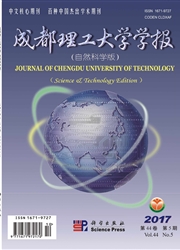

 中文摘要:
中文摘要:
由于基底性质、地层组合特征及不同地质历史阶段构造背景的不同,南方海相不同地区的油气成藏地质条件表现出明显的差异性。平面上,可划分为7种地质结构类型、2大类6种形式的埋藏史类型、4种类型的油气成藏组合,在区域盖层、有效烃源岩及构造运动对保存条件的影响方面也表现出明显的地区差异性。综合上述油气地质因素的差异,可以将中国南方海相划分为四川盆地区、黔中古隆起及其周缘、江汉盆地南部及苏北盆地等中新生界覆盖区、湘鄂西-武陵-黔南滇桂地区、以龙门山前与米仓山-大巴山前等为代表的山前带5种类型的地区,这些地区的油气成藏地质条件均具有各自不同的特征,从而也具有不同的油气勘探前景与勘探对象。
 英文摘要:
英文摘要:
Due to the difference of the basement rock, character of formation combination and tectonic setting of different periods in geological history, the geological conditions of hydrocarbon accumulation in the marine facies of the south of China are obvious different in different areas. The geological configuration can be divided into seven types, the burial evolution history can be classified into two groups and six types, and the combination of hydrocarbon accumulation can be classified into four types. According to the difference of geological factors in hydrocarbon accumulation, the marine exploration areas in the south of China can be divided into five types, i.e. Sichuan Basin, the central Guizhou uplift and its adjacent areas, the areas covered by Mesozoic and Cenozoic, such as, the south of Jianghan basin and the north of Jiangsu basin, the west of Hunan and Hubei-Wuling area-Southern Guizhou and Yunnan-Guangxi regions, the foreland areas exampled by forelands of Longmen Mountains and Micang-Daba Mountains. Because the geological conditions of hydrocarbon accumulations are different in these areas, the prospect and targets of hydrocarbon exploration are different, too.
 同期刊论文项目
同期刊论文项目
 同项目期刊论文
同项目期刊论文
 期刊信息
期刊信息
